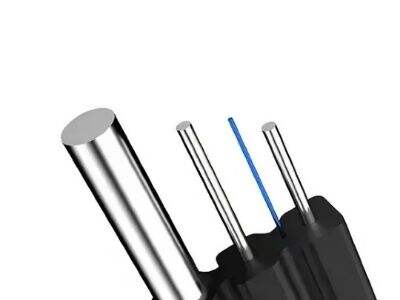Whether you are looking for the best fiber optic cables for your business, you would want an easy and useful guide to help you out. At its core, fiber optic cables are what we use to transmit data quickly. But there is some tricky word and technical details which are not easy to comprehend. This is exactly why Qitian made this manual just for you. And, it will guide you in choosing the correct fiber optic cable for your business needs.
Buying Fiber Optic Cables Things to Remember
Most important tips to be considered are listed below before you make a decision to buy fiber optic cable. First of all, you must know what type of cable you really require. There are two primary options, namely single-mode cables and multi-mode cables. Single-mode cables are better for long distances, and the multi-mode cables are better for short distances. So, it is vital to know which one you require.
You think about the cable length and the thickness. According to the space you want your devices to get connected, your cable length must be suitable in length. Moreover, a length of cable is demanded if the distances are too big. Thickness could also matter concerning the area being covered since sometimes thicker cables last longer and support better for special areas.
Finally, know which connectors you will use. Connectors: These connect the cables to your devices. Different devices require different kinds of connectors so know what you need before purchasing.
Selecting the Right Optical Fiber Cable for Your Organization
Choosing the right fiber optic cable for your business can sound very daunting, but it is not! One of the reasons it's wise to become familiar with the various types of fibers out there. Again there is single mode and multi mode fibers. And each type has its distinct uses, so knowing the differences will help you make a more informed selection.
Also, pay attention to the covering materials of the cables, which are called jackets. Some jackets have a strong exterior that can endure extreme weather, while the other type is suited for indoor applications. Finally, pay attention to the connectors you get with your cables. The connectors of some cables are simpler to use than others, and it's beneficial to know in advance which of them will better suit your purposes.
What to Know
To understand Fiber Optic Cable working approaches, you have to realize that fiber optic link utilize light to transmit information. This is different than normal copper cables that use electricity. Fiber optic cables send information faster and more efficiently because they use light. They’re also designed to be durable and last longer than copper cables so you won’t need to replace them as frequently.
Fiber optic cables can work well under extreme temperatures. This can be either hot or cold. Such makes them suitable for diverse environments.
Benefits of installing fiber optic cables
There are several advantages of fibre optic cables that make them a good choice. For one, they can transmit data at much faster speeds than the traditional cables. This means you can send and receive information pretty fast, and this is important for business.
They can also carry a much greater amount of data at once. This is called bandwidth capacity. Baud rate means more bandwidth, so the more devices that are connected and larger files that are transferred without slowing the network.
Third, fiber optic cables will work farther without losing their quality. That's a great benefit if your business has lots of locations or a device has to link to distant ones-for example, a casher connecting to other devices beyond the network.
The fibers are also less prone to being susceptible because they are not interfered with by other signals. This makes them a lot more reliable, especially in crowded areas where dozens of devices are all trying to connect at once. Finally, they are more secure than copper cables as they are more difficult to tap into. This means your data is less vulnerable to hackers.


